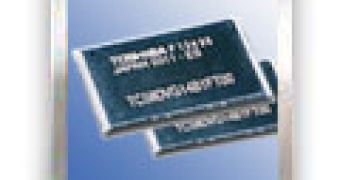After a long decline and recovery period, the NAND flash memory is finally beginning to get better and offer strong opportunities for memory manufacturers and vendors like Samsung Electronics. The Korean company used the favorable market conditions to increase its lead over its competitors on the NAND chips market, especially Toshiba. With a NAND market share fat approaching 50 percent, the electronics giant is by far the most important manufacturer and vendor of flash memory solutions.
According to the news site DigiTimes, Samsung Electronics reported revenues from the NAND production and sale of $1.4 billion an increase of 18.9 percent from the first quarter time frame. "Samsung's strong performance in the second quarter was due to its 11% growth in bit shipments," said Nam Hyung Kim, director and chief analyst for memory ICs/storage systems at iSuppli, who was cited by DigiTimes. "This major increase in shipments was due to Samsung expanding its sales to consumer applications including Apple's iPhone and iPod lines. Meanwhile, Toshiba increased its bit growth by only 2% due to its initial process migration to 56nm. However, iSuppli expects Toshiba's 56nm production yields to improve, causing its bit shipments to rise by more than 30% this quarter."
Not only Samsung's revenues went up from the NAND flash market, but all the companies that are producing flash based memory solutions received a similar boost as the global market reached the $3 billion revenue mark, which represents one of the strongest ascending trends from the spectacular event in 2005 when the market growth registered a 21 percent increase. Because of over production and high inventories, the NAND market sank at a very low level during the first quarter of the year 2007, and as manufacturers decreased production and inventories began to shrink, the market started its slow recovery. The current market situation with higher than average selling prices is in part because of the power outage that sent to the rubbish pile a significant quantity of NAND flash chips from Samsung.
Even if Samsung declared that it does not expect high losses of flash memory wafers, some market analysts suggest that the total loss was around 10 percent of Samsung's monthly wafer output, which translates in about 1 percent of the total wafer production for this quarter. According to the market research firm iSuppli, the power outage could in fact prove an opportunity to increase prices for NAND flash memories, a step that would prove most helpful for all manufacturers.

 14 DAY TRIAL //
14 DAY TRIAL //